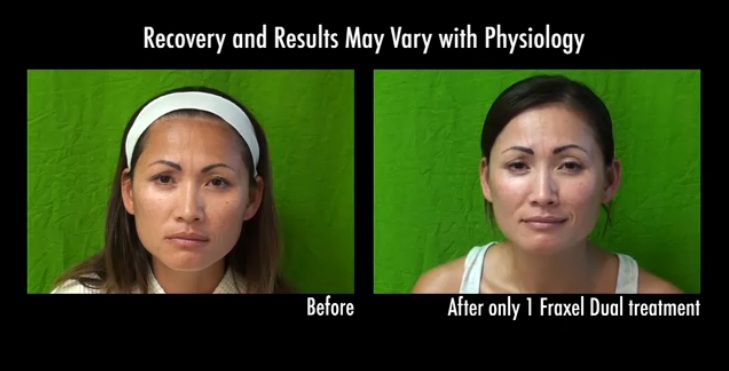Fraxel is one of the most talked about skin laser systems in the media. It is helping to change the way we approach common issues such as:
– Acne scars
– Age spots
– Melasma
– Large pores
These concerns are caused by tiny structural elements in the skin. And with Fraxel, it is possible to correct them by making pixelated and highly targeted adjustments. This is far more advanced than strictly focusing on the outer surface of the skin through the use of exfoliants and topical creams.
Patients who are considering treatment with Fraxel laser systems may want to become familiar with some basic terms. Additionally, an understanding of the numbers used is another area that will help to bring more clarity in discussions with doctors as well as decision making.
Brief Summary of Fraxel Lasers And the Various Systems Available
The brand name, is a take on the word fractionated. The laser energy is administered as tiny columns of light through the skin. This is how Fraxel is able to create results. Therefore, precise areas (across the surface and in deeper levels) can be addressed while leaving the rest of the skin alone. Less downtime is needed for recovery.
There are generally four laser systems that patients typically hear about:
(1) Fraxel Repair
Fraxel Repair is recommended for very fair skin. It can be unsafe for individuals with warmer tones. The micro-columns of light pass through the skin and vaporize the cells. This is considered an ablative form of treatment since tissue is removed. The sessions are aggressive and usually only one is needed
(2) Fraxel Restore
This laser uses the 1550nm wavelength which prevents unnecessary absorption by surrounding melanin. Therefore, it is safe for all ethnic groups. It can reach the deeper dermis layer to promote collagen remodeling.
(3) Fraxel Refine
Fraxel Refine uses 1927nm wavelength which is ideal for issues that are closer to the skin’s surface such as age spots and other forms of pigmentation. It can also be used on any skin tone.
(4) Fraxel Dual
Fraxel Dual can be thought of as a combination of Fraxel Restore and Fraxel Refine. Patients can enjoy the benefits of a more comprehensive laser treatment where new collagen growth is stimulated in the dermis and surface issues are corrected to refine the final results.
What the Parameters Mean In Fraxel Laser Settings
Recommended settings are generally expressed as:
(1) Mega jouls- the amount of energy used. This also correlates with the depth of skin (in microns) that will be penetrated by the laser. For example 18 mj corresponds to about 700 microns.
(2) Level – the percentage of skin that is treated. The higher the percentage, the more intense the treatment will be.
Higher settings tend to be used for acne scars. This is usually between 60-70 mj. 50 mj is the highest level of energy typically recommended for deep lines and scars.
Lower settings (e.g. 12 mj) are often recommended for pigmentation issues.
With Fraxel Restore/Dual, the range of energy is between 5mj to 70mj. And since Fraxel Refine uses lower settings, the maximum amount of energy is 20mj.
Hear what this patient has to say about her Fraxel Dual treatment for acne scars. Click here

